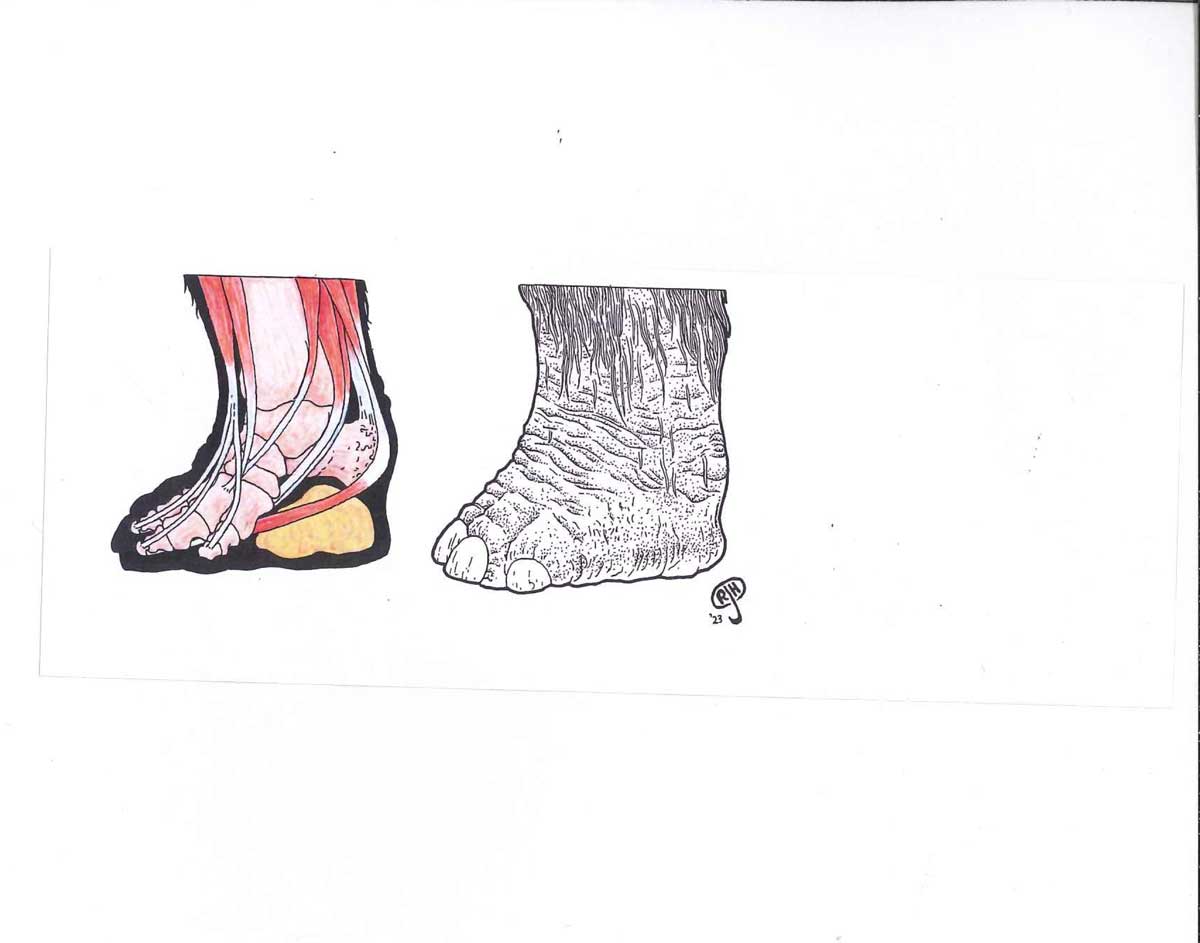Tate Museum Mammoth Foot
An elephant has stumpy, massive feet that leave deep, almost perfectly round footprints. But if you saw an elephant walk through an X-ray machine, you’d get a surprise: underneath all the soft tissue, the animal is actually walking on tip-toe! Underneath the heel bone, or calcaneum, the living elephant has a thick, wedge-shaped pad of fat. This spreads out the weight of the animal and keeps the foot bones from cracking under the pressure. It also allows the elephant to move in almost complete silence.
The way that the foot bones of a mammoth are jointed show that they, too would have walked on tip-toe. Fossil mammoth footprints show that the sole of the animal’s foot was almost perfectly round-so, like an elephant, there would have been a fat pad under the heel. Other soft tissues filled out the spaces around the other bones, and a thick nail would have capped the tip of each toe. All told, the foot of a mammoth looked a whole lot like the foot of a modern elephant – just bigger and hairier.
Left: Reconstruction of Dee’s right hind foot, showing the fat pad (yellow), muscles (red) and tendons (blue).
Right: Restoration of Dee’s left foot as it would have appeared in life.

